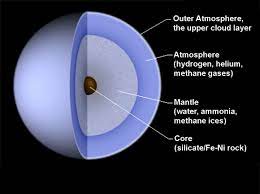To boost and increase your chances of pregnancy, it is important to closely monitor, when you are ovulating. This will further help you and your partner to understand on which particular dates, to have sex. To get better ovulation, you can try Hera’s Ovulation vitamin.
Ovulation happens halfway through your period cycle. Every woman’s period cycle and the respective number of days is different, so you have to pay close attention to its signs and symptoms.
- Monitoring the body temperature
The easiest way to find out whether you are ovulating or not is to note down the body temperature as soon as you wake up in the morning. Note down the body temperature even before you are out of your bed. Note the readings every month for a year or two. You will notice the drop in the temperature, later marked by a sudden rise. The normal body temperature is 97.2 to 97.6 Fahrenheit. During the time of ovulation, the temperature of the body may rise by 1 or 1.5 Fahrenheit. The process of Basal body temperature monitoring is also called BBT monitoring. You should see the constant rise for several months as the body temperature can vary by 0.5 Faranhiet usually. It is a long process and is also not an accurate one. You need to the patient if you are using this trick.
- Irritating pain
Ovulation generally occurs on the 14th day of the menstrual cycle (day 1 to be the first day of periods). If your cycle lasts for 28 days the ovulation occurs in the midway i.e. the 14th day. If your cycle lasts for 32 days then the ovulation is more likely to occur on the 18th day. Many women face a small twinge at the time of ovulation but they do not pay much attention to it. If you are in pain at the time of periods, then it also indicates that you are ovulating. At the time of ovulation, you may face pain which can last for a couple of minutes or hours. Even a few women were told to have bleeding and discharge at the time of periods. Nausea along with the pain is the sign that you are ovulating. The ovulation window is most fertile for 3-4 days. In case you are trying to get pregnant, you can be trying in those days it will increase your chances.
- Ovulation prediction kit
The clear and accurate idea of checking your ovulation is the prediction kit. Other changes may vary and are not 100 per accurate. Your urine sample is taken to check your Luteinizing hormone (LH). The high levels of Luteinizing Hormones indicate that you are a fertile window. The luteinizing levels are high every month 2-3 days before ovulation. The kit contains several strips for you to precisely check your Lutenzing levels. You can start using the stripes on the 13 or 14 days from your menstrual cycle. Repeat the process for a few months and pinpoint your hormone levels.
Nevertheless, one can always make use of HERA ovulation calculator, which is nothing but an ovu calculator, which primarily helps when you are trying to conceive a baby, as it is not easy and moreover also requires a bit of planning.
The progesterone ovulation tests are done after ovulation to detect if the ovulation has occurred or not. This test also uses your urine and measures the progesterone metabolite. These tests are done before you expect the beginning of a menstrual cycle. Ask your doctor and find out what progesterone levels indicate that you are in the most fertile window.
- Discharge
Discharge is the clear symptom which can be easily observed by every woman. When you ovulate your cervical mucus becomes clear and slippery. It changes to copious fluid like that of egg white. It is so viscous that it stretches between your fingers. Slowly in a few days, the mucus turns to scant and sticky again. The thick and scant mucus indicates that the process of ovulation is over. During the menstrual discharge as well ovulation can be confirmed. Brown discharge or spotting is observed. As the blood gets older the vaginal discharge changes its colour from red to dark red or brown.
- Physical body changes
In the later phase of ovulation, after 14 days many women develop a sensitive sense of smell Your body gets more attracted to male androsterone and pheromone in the fertile phase. There is a sudden rush of hormones into your body both before and after ovulation. The other sign of ovulation is that you feel tender breasts or sore nipples. The changes in the cervix are the other major symptom. The cervix becomes softer, open, and higher. Though it is very tough to detect this change, you can still check it out. The cervix becomes softer just after the ovulation and hard after the completion of the menstrual cycle. You need to stand in the position of inserting tampons and check it with your fingers.
So, these are the top five ways to know, when you are ovulating. Moreover, these can be the easiest way to know when you’re ovulating. But if you don’t notice any of the above mentioned signs or symptoms of ovulating, don’t worry, it simply doesn’t mean that you may not be ovulating.









